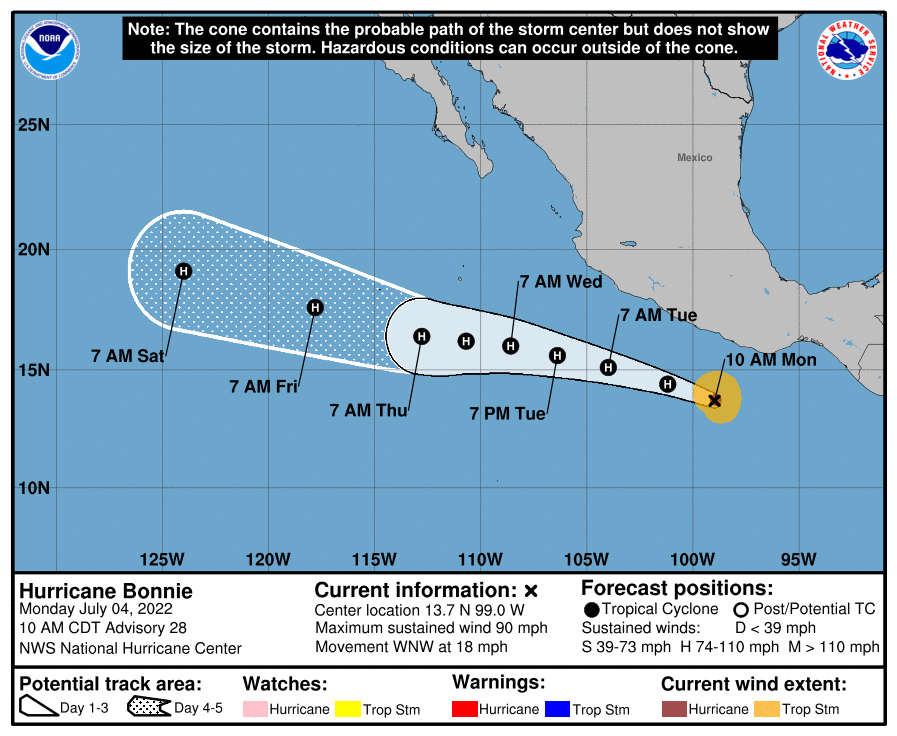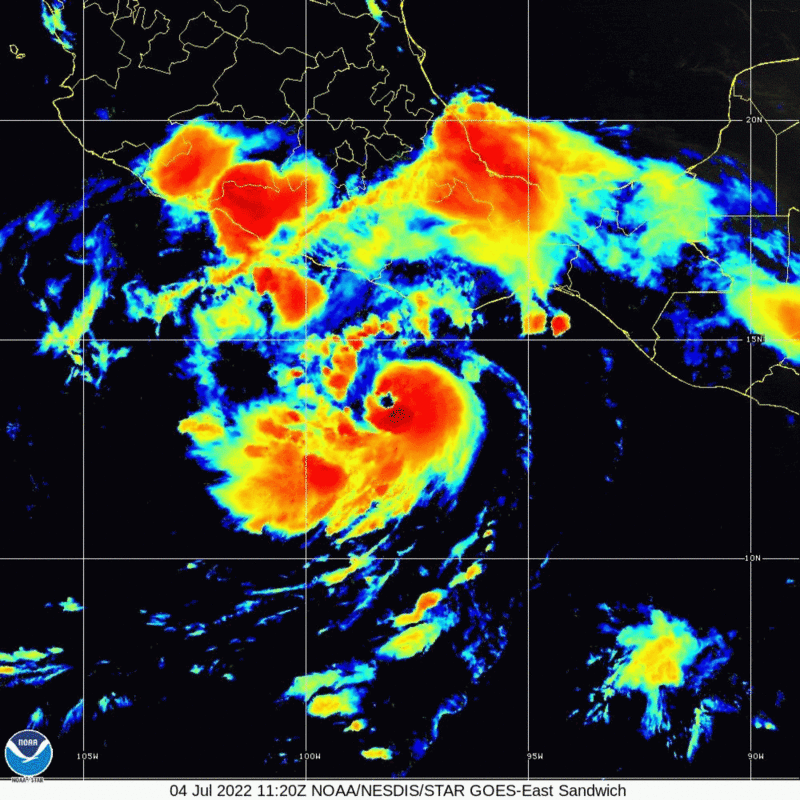What was Tropical Storm Bonnie has become Hurricane Bonnie, whose maximum sustained winds are 90 miles per hour; it is currently centered approximately 230 miles south southeast of Acapulco in Mexico; and it is moving west northwest at 18 miles per hour — but those statistics are not why the tropical system has become unusually historic.
Hurricane Bonnie Becomes Unusually Historic

Although southwestern Mexico is experiencing some of the effects of Hurricane Bonnie in terms of the occasional heavy precipitation and gusty winds, this tropical system is not expected to be a threat to any land mass or to anyone — other than to those vessels which traverse in certain shipping lanes…
…but it formed in the southwestern area of the Caribbean Sea, passed through Central America, its path is one of the southernmost tracks of hurricanes in the Atlantic Basin, and emerged into the eastern Pacific Ocean — all within the timeframe of a mere 24 hours.
The name of this tropical cyclone remained as Bonnie instead of being changed to Darby, as the names for storms which are assigned to the Pacific basin are different than the names for storms which are assigned to the Atlantic basin. According to this Wikipedia article pertaining to what are apparently known as Atlantic–Pacific crossover hurricanes — and at least 19 of them have reportedly existed since 1842 — prior to the year 2000, “storms were renamed after crossing from the Gulf of Mexico into the Eastern Pacific. At the 22nd hurricane committee in 2000 it was decided that tropical cyclones that moved from the Atlantic to the Eastern Pacific basin and vice versa would no longer be renamed. Hurricane Otto in 2016 was the first storm to cross from one basin to another to apply under this rule.”
Tropical Storm Bonnie is the second Atlantic-Pacific crossover tropical cyclone since that decision was supposedly reached — and therefore, its name has not changed…
…unlike when a tropical cyclone named Grace in the Atlantic Ocean basin became Tropical Storm Marty in the eastern Pacific Ocean basin after crossing the Yucatan Peninsula last year in August of 2021.
Final Boarding Call
Keeping the name of a tropical cyclone when it crosses from one basin to another is something which I always thought should be done because it is the same storm with a history — and now it is…
…but I understand that if a named cyclone loses its tropical characteristics to become a low pressure system and then the same low pressure system redevelops in a different basin, its name will still change.
I do not agree with that if that is true; but then again, I am not a professional meteorologist…
Source: The National Oceanic and Atmospheric Administration of the Department of Commerce of the United States.

